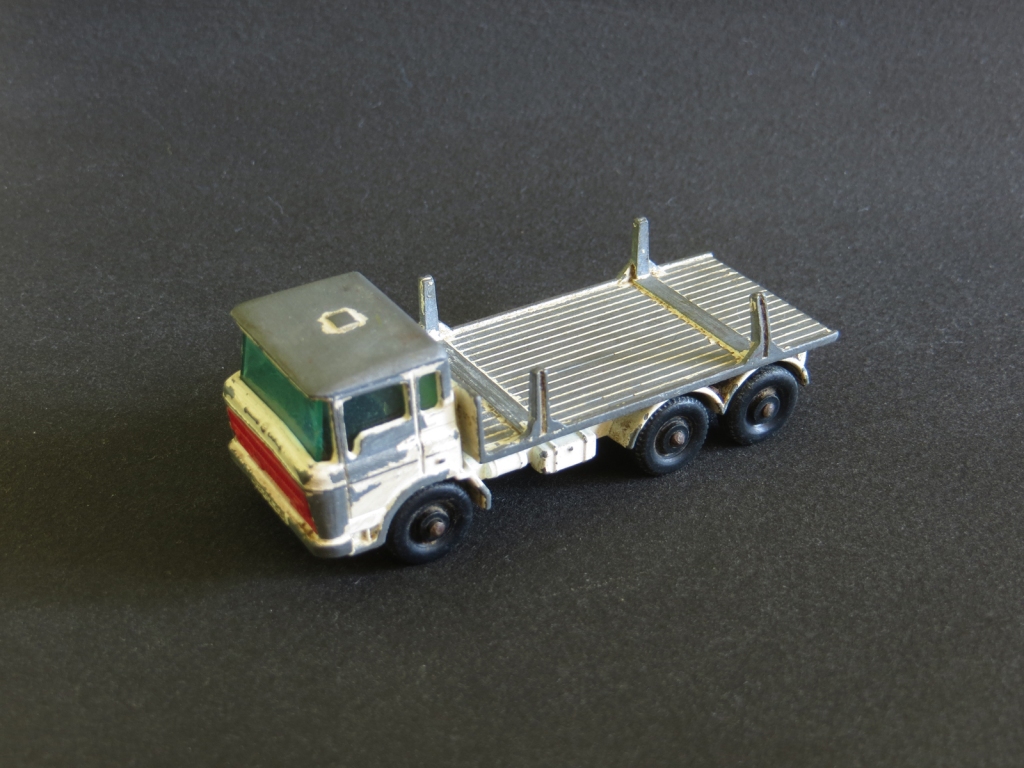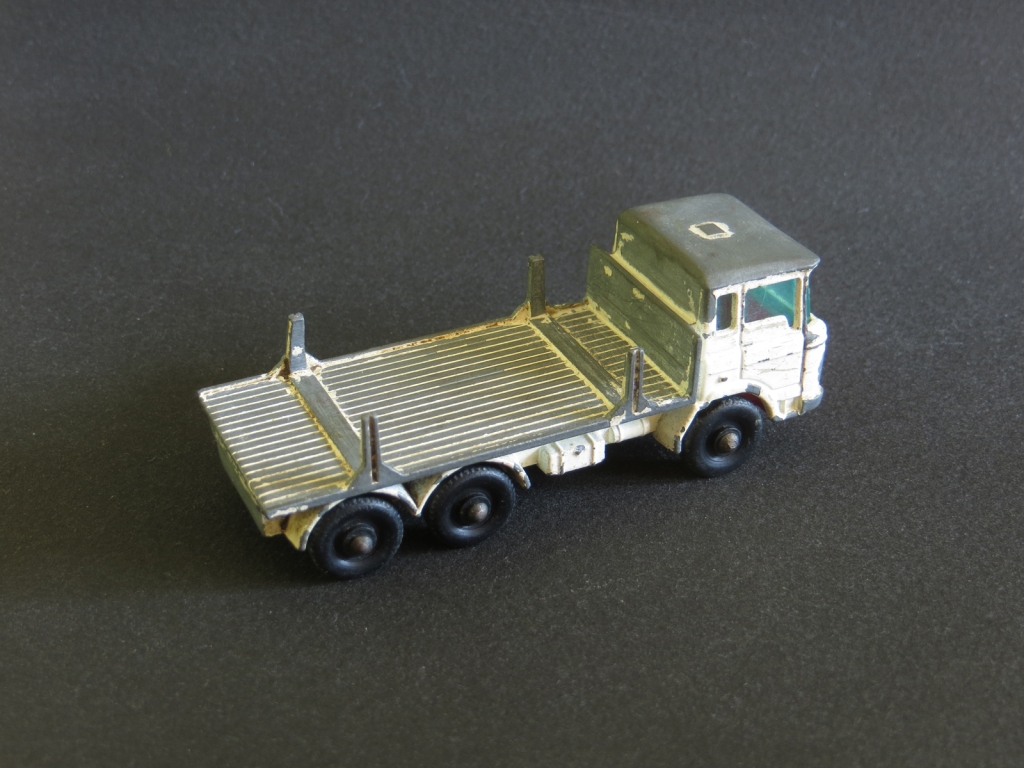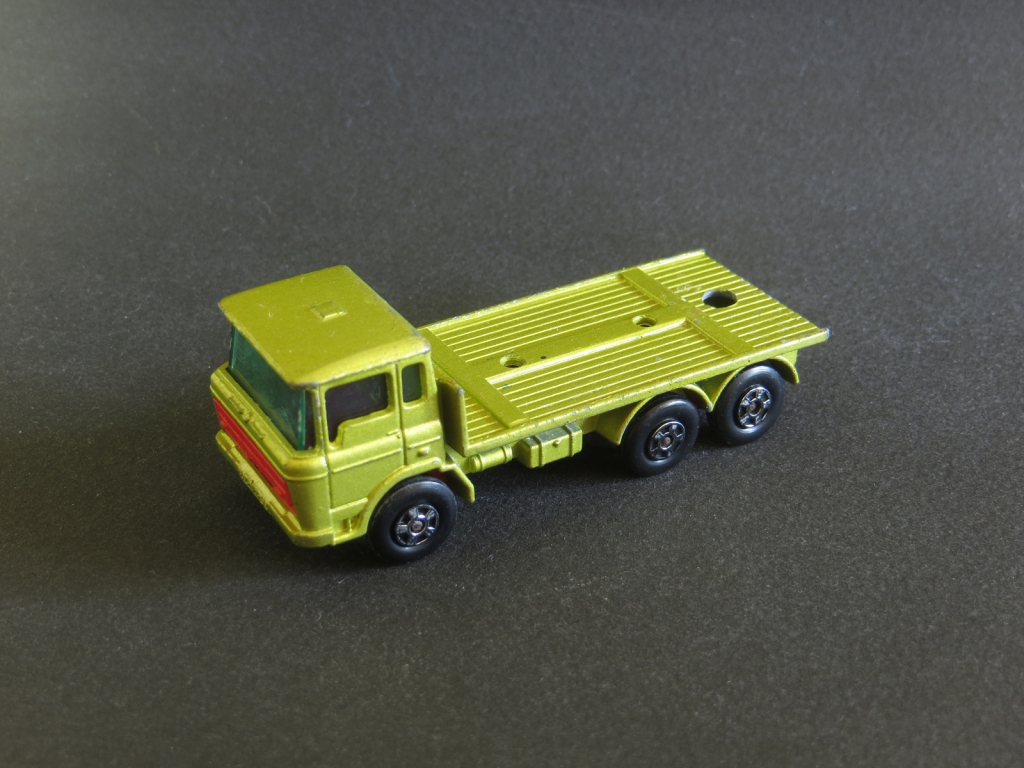Associated Equipment Company (AEC) was a British company that manufactured trucks and buses from 1912 until 1979. Initially set up to handle manufacturing of the buses for the London Underground, AEC was an important supplier of military lorries during both world wars. In the post-war years, the company thrived by offering a wide range of trucks and buses. AEC was acquired by Leyland Motors in 1962 and production of the Leyland (AEC) Marathon ceased in 1979.
The Matchbox AEC Ergomatic 8-Wheel Tipper, based on the AEC Mammoth Major with the Leyland Ergomatic cab, was first released in 1969 and was produced in about 7 different variations. There are five black plastic wheel versions, all from 1969, with variations in paint, details and labels. There are two more variations from 1970, both with Superfast wheels, with and without labels on the bed. Both of my examples have regular wheels and are from my Wichita eBay connection.

First, an orange model with black plastic wheels, a silver grille and Douglas labels on the silver tipper.


The Matchbox AEC Ergomatic 8-Wheel Tipper has a well-designed metal tipper with a metal swinging tailgate.

Matchbox | 1969 | #51 | AEC Ergomatic 8-Wheel Tipper | orange with silver tipper, Douglas labels, blue tint windows, silver plastic grille and base | England | black plastic wheels
Next, a yellow variation with black plastic wheels, a silver grille and Pointer labels on the silver tipper.



The Ergomatic cab was designed for visibility, comfort and easy access to the engine.

Matchbox | 1969 | #51 | AEC Ergomatic Eight-Wheel Tipper | yellow with silver dumper, Pointer labels, blue tint windows, chrome plastic grille and base | England | black plastic wheels

































